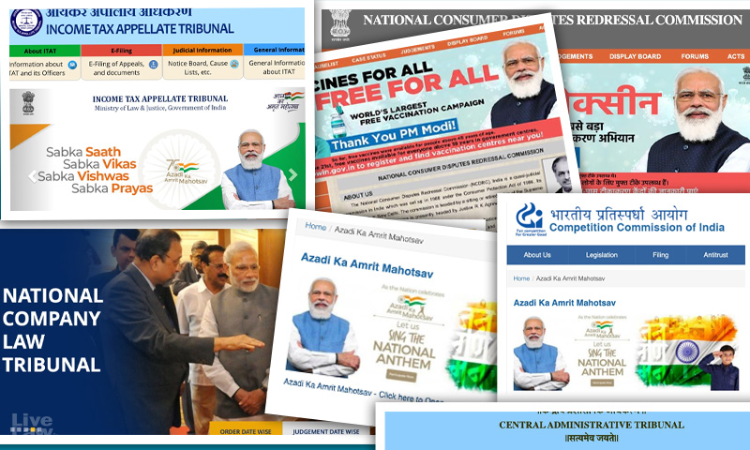- Home
- /
- Top Stories
- /
- Prime Minister Modi's Images &...
Prime Minister Modi's Images & Slogans Of Centre Appearing In Official Websites Of Tribunals Raise Eyebrows
LIVELAW NEWS NETWORK
25 Sept 2021 7:12 AM
The images of Prime Minister Narendra Modi with the tagline of the Union Government in the footer of the official emails sent from the Supreme Court had become a raging talking point among the Supreme Court lawyers. It seemed that the images and the banners were placed by default by the National Informatics Centre, which handles the official domain of the Court.An embarrassed Supreme Court...
The images of Prime Minister Narendra Modi with the tagline of the Union Government in the footer of the official emails sent from the Supreme Court had become a raging talking point among the Supreme Court lawyers. It seemed that the images and the banners were placed by default by the National Informatics Centre, which handles the official domain of the Court.
An embarrassed Supreme Court issued a prompt direction to the National Informatics Centre (NIC) to remove the image of PM Modi and the banner of the Central Government from the official court mails. Following the Court's direction, the NIC has now placed the image of the Supreme Court in the footer of official mails.
However, it seems that many Tribunals and quasi-judicial bodies have not followed the message conveyed by the Supreme Court. The pictures of the Prime Minister along with the congratulatory messages for the Centre are still appearing in the official websites of many Tribunals, giving an impression that the lines of separation powers are blurred.
National Consumer Disputes Redressal Commission
The official website of the National Consumer Disputes Redressal Commission has a moving banner which says "Thank You PM Modi" in both Hindi and English for providing free vaccines to all.
Here are the screenshots of the site at 11.39 AM on September 25 :


The official pages of ITAT, CAT, CCI, APTEL have images of PM Modi with the "Azadi Ki Amrit Mahotsav" message of the Centre.
Income Tax Appellate Tribunal
The screenshot from the official website of the ITAT, at 11.41 AM, September 25, 2021 :
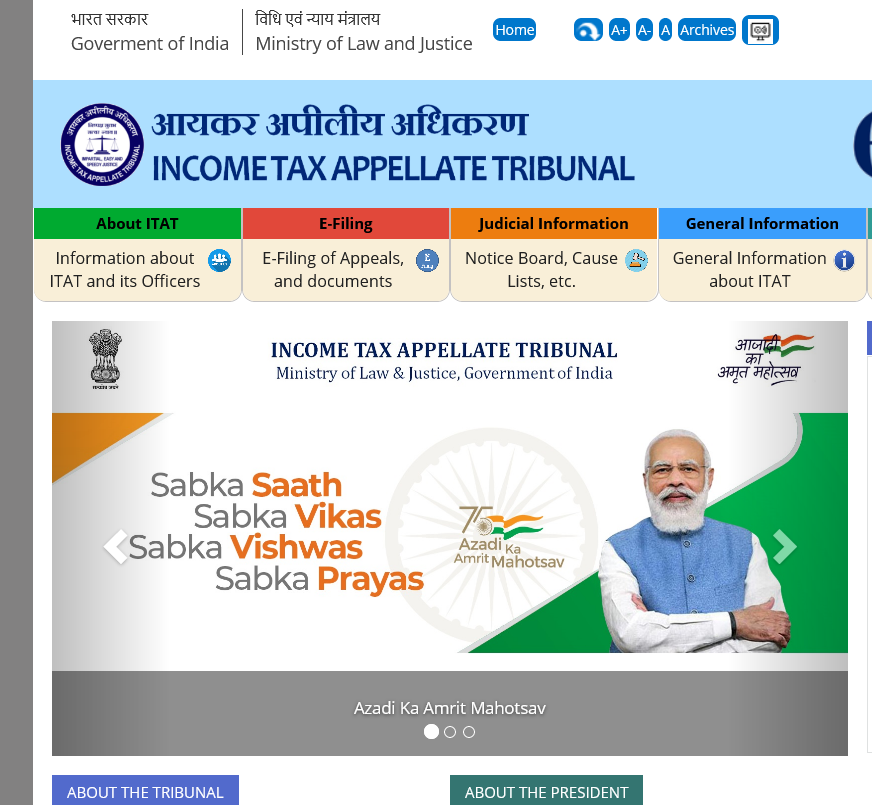
Central Administrative Tribunal
The screenshot from the official website of the Central Administrative Tribunal, at 11.42 AM, September 25, 2021 :
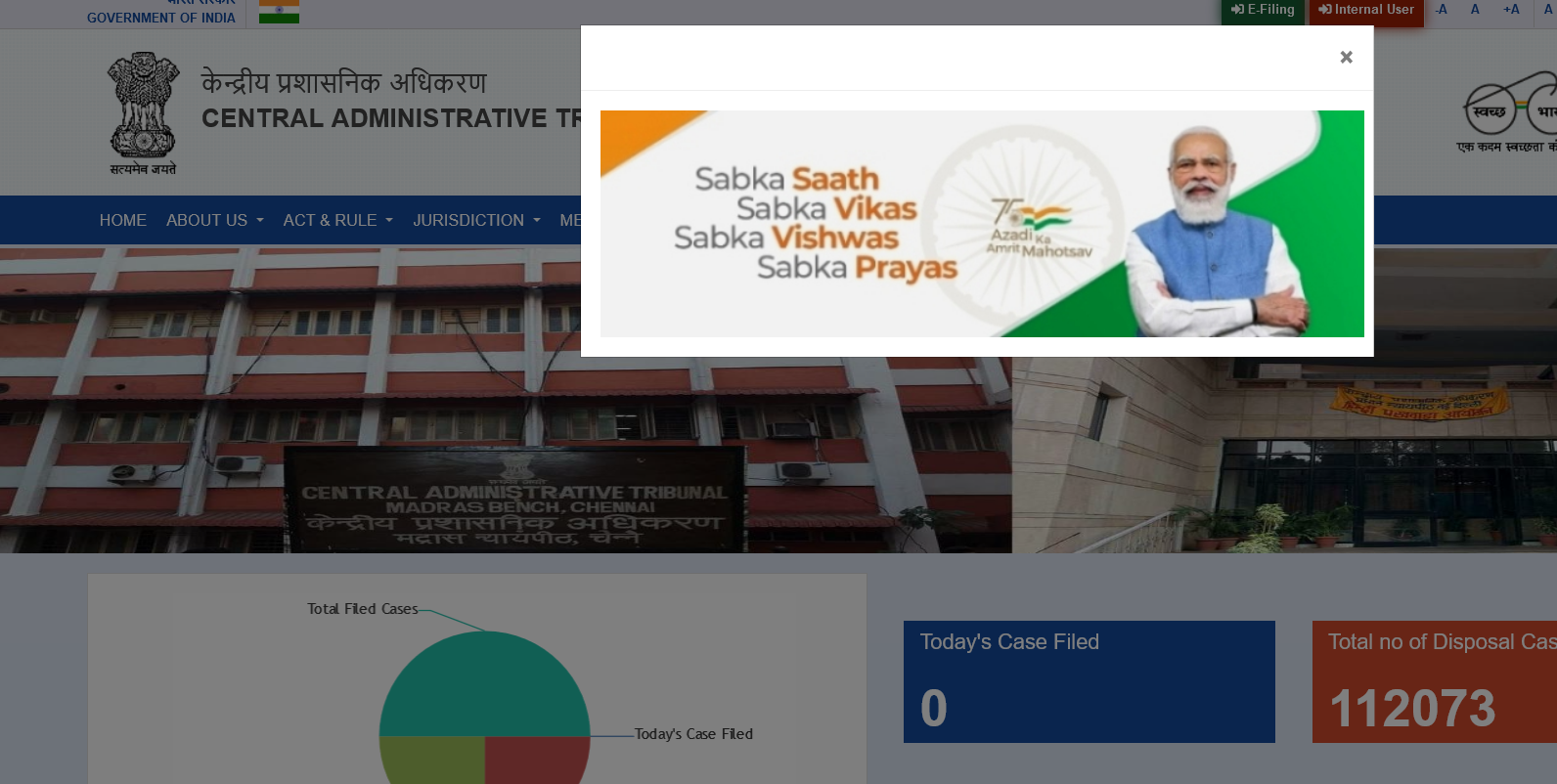
Appellate Tribunal for Electricity
The screenshot from the official website of the Appellate Tribunal for Electricity, at 11.44 AM, September 25.

Competition Commission of India
The screenshot from the official website of the CCI at 11.45 AM, September 25.
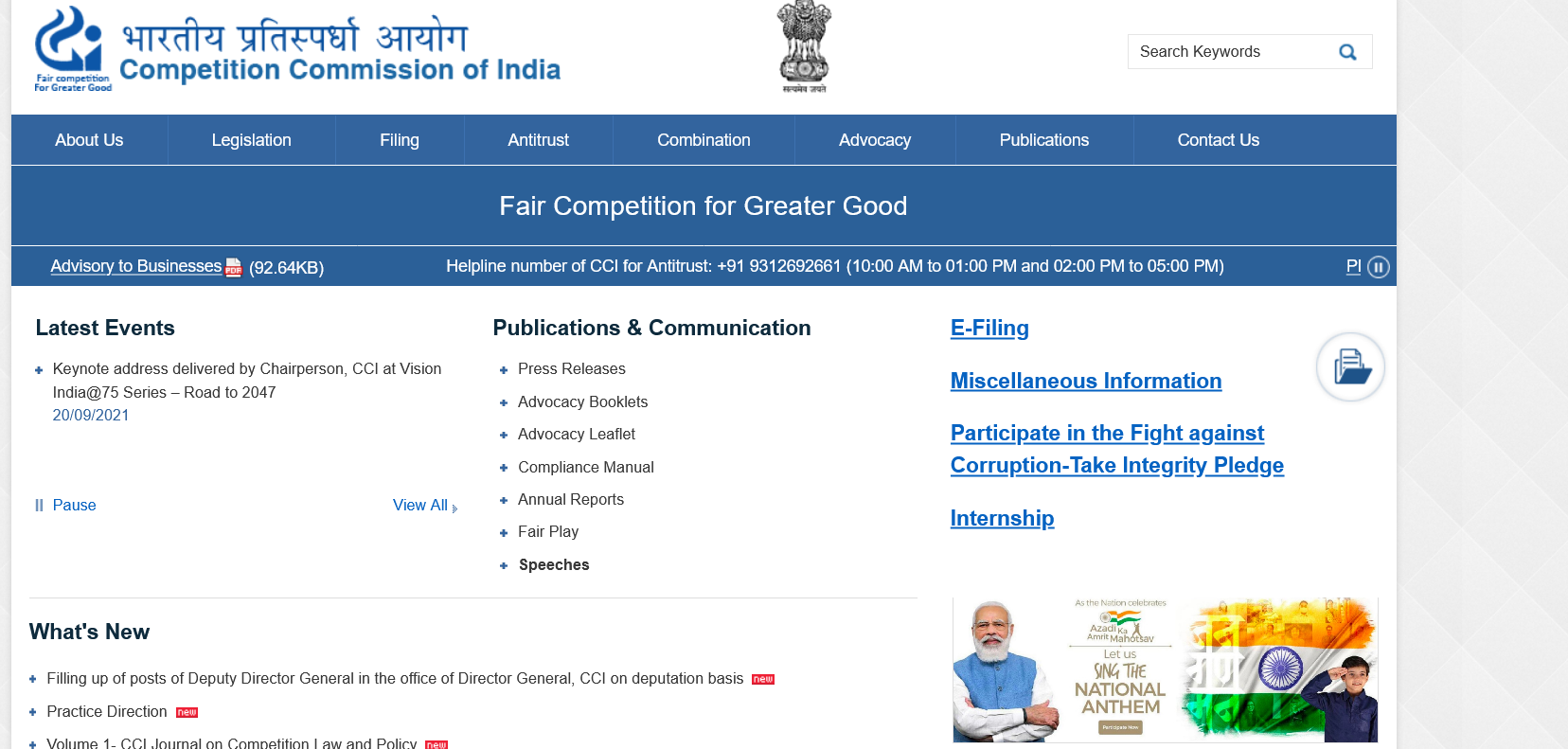
National Company Law Tribunal
The screenshot from the official website of the CCI at 11.48 AM, September 25.
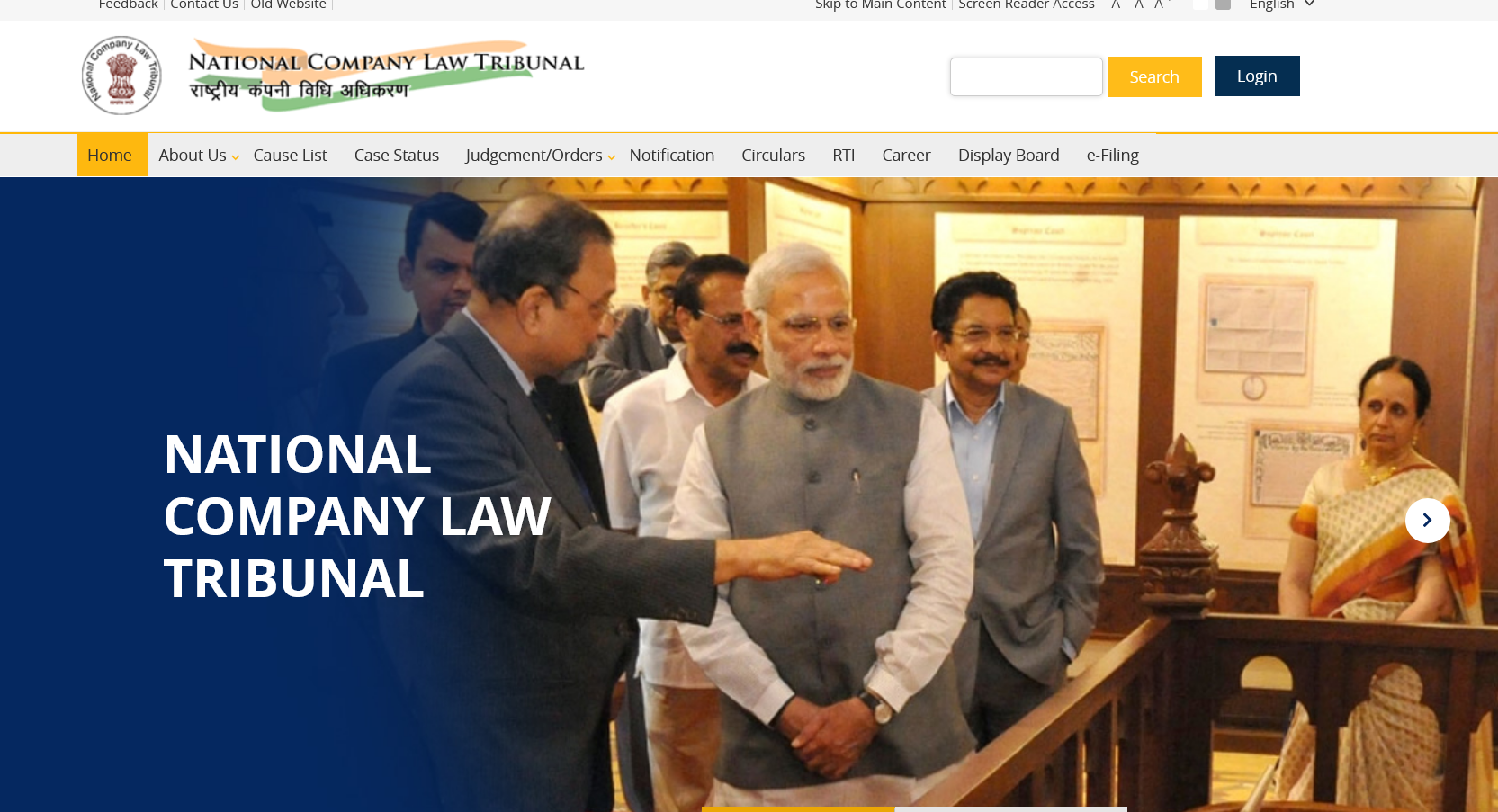
The official sites of these Tribunals are maintained by the NIC.
In this connection, it is relevant to note that the Supreme Court has recently taken serious note of the functioning of the Tribunals, which are weighed down by mounting arrears and unfilled vacancies. The Court has been making severe critical remarks against the Central Government for not heeding its various directions to enhance the independence of Tribunals.
The Court has directed the constitution of a National Tribunals Commission to free Tribunals from the control of the respective Ministries.
"A constant complaint has been that the Tribunals are not free from Executive control and that they are not perceived to be independent judicial bodies. There is an imperative need to ensure that the Tribunals discharge the judicial functions without any interference of the Executive whether directly or indirectly", the Court observed last year in the Madras Bar Association case.
Since the Central Government is yet to implement that direction, the Tribunals continue to function under the Union Ministry.
In the recent Madras Bar Association-II judgment, the Supreme Court had made several significant observations regarding the need to maintain the independence of Tribunals.
"Independence of courts from the executive and the legislature is fundamental to the rule of law and one of the basic tenets of the Indian Constitution. Separation of powers between the three organs, i.e., the legislature, the executive and the judiciary, is a consequence of the principles of equality as enshrined in Article 14 of the Constitution. Any incursion into the judicial domain by the other two wings of the Government would, thus, be unconstitutional", the Court had said.

